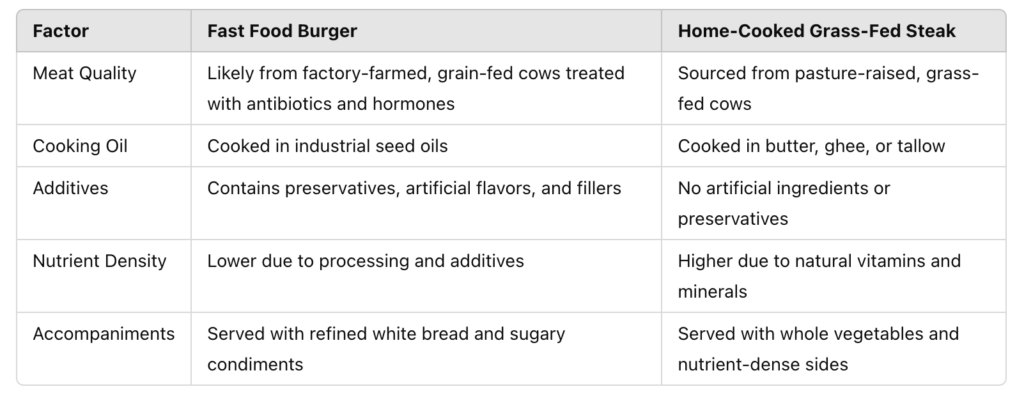Why Tart Cherry Is the…
Blog by Sherry Larson Why Tart Cherry Is the Natural…
Table of Contents
Toggle
Cortisol, commonly known as the “stress hormone,” plays a crucial role in regulating metabolism, immune function, and the body’s response to stress. However, when cortisol levels remain chronically high, it can lead to a wide range of physical and emotional health issues. From disrupted sleep to stubborn belly fat, high cortisol affects nearly every system in the body.
Many people unknowingly suffer from cortisol imbalances due to modern lifestyles filled with stress, poor diet, lack of sleep, and excessive caffeine or sugar consumption. Recognizing the signs of high cortisol is the first step toward restoring balance and improving overall well-being.
Signs Your Cortisol Is High
Causes of Chronically High Cortisol
Several factors contribute to prolonged high cortisol levels, including:
How to Naturally Lower Cortisol Levels
Balancing cortisol requires lifestyle adjustments that promote relaxation, proper nutrition, and healthy habits. Here are some of the most effective ways to lower high cortisol naturally:
Conclusion: Take Control of Your Cortisol Levels
Chronic high cortisol can have serious consequences on physical and mental health, but the good news is that it’s possible to regain balance through intentional lifestyle changes. Recognizing the signs of high cortisol is the first step, followed by making adjustments to diet, exercise, sleep, and stress management techniques.
By prioritizing relaxation, nourishing your body with proper nutrients, and fostering a healthy lifestyle, you can keep cortisol levels in check and improve overall well-being. Your health is in your hands—start making small, sustainable changes today to feel more energized, focused, and resilient against stress.

Choosing whole, minimally processed red meat makes all the difference in how it affects the body. Fast food versions of red meat often contain harmful chemicals, while properly sourced and prepared red meat provides essential nutrients without the negatives.
How to Consume Red Meat in a Healthy Way
If you enjoy red meat, there are ways to incorporate it into your diet while minimizing potential risks:
Conclusion: The Fast-Food Illusion
The widespread claim that “red meat causes colon cancer” is misleading when we fail to consider what accompanies that meat. A McDonald’s meal consisting of a processed beef patty, refined white bun, French fries fried in seed oils, and a sugary soda is a far cry from a grass-fed steak with a side of vegetables. The issue isn’t the red meat itself—it’s the processing, additives, and inflammatory ingredients found in ultra-processed foods.
When red meat is consumed in its whole, unprocessed form and paired with a nutrient-dense diet, it can be a beneficial part of a healthy lifestyle. Instead of demonizing red meat, we should focus on reducing our intake of processed junk food, refined sugars, and seed oils—the real drivers of modern disease.
By shifting the conversation from demonizing a single food group to analyzing overall dietary patterns, we can make informed choices that prioritize true health and longevity.
Blog by Sherry Larson Berberine: Nature’s Secret Weapon for Blood Sugar, Inflammation & More If you’re looking for…
Blog by Sherry Larson Shilajit: Nature’s Ancient Energy Tonic for Modern Burnout We’ve all felt it—that sluggish, wired-but-tired…
Blog by Sherry Larson Celery Juice: The Gut-Healing, Liver-Loving Morning Ritual You Didn’t Know You Needed If you’ve ever felt…
Blog by Sherry Larson Milk Thistle: The Detox Defender Your Liver Has Been Waiting For Milk thistle might…
Blog by Sherry Larson The Link Between Ultra-Processed Foods and Cancer: What They’re Not Telling You Every day,…
Blog by Sherry Larson Understanding High Cortisol: Signs, Causes, and Natural Ways to Balance It Cortisol, commonly known…
Blog by Sherry Larson The Truth About Red Meat and Health: Why the Real Culprit May Not Be What You…
Blog by Sherry Larson The Hidden Dangers of Diet Cola: What You Need to Know Diet cola has…
Blog by Sherry Larson 14 Ways to Begin Healing Your Gut and Transform Your Health …
copyright © 2025 Anti-Inflammatory Approach. All rights reserved. Unauthorized reproduction, distribution, or use of any content, including text, images, recipes, or other materials on this website, is strictly prohibited without prior written permission. This website’s content is provided for informational purposes only and does not constitute medical or professional advice.